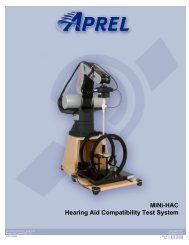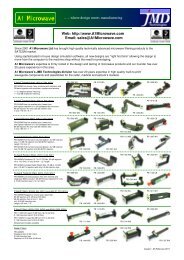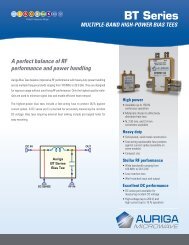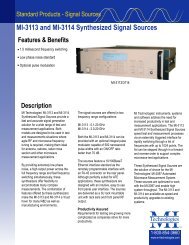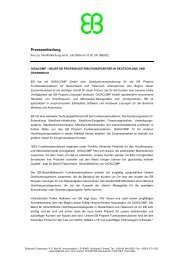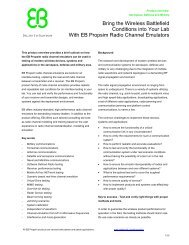Your Ceramic Solutions Provider - Gigacomp
Your Ceramic Solutions Provider - Gigacomp
Your Ceramic Solutions Provider - Gigacomp
Create successful ePaper yourself
Turn your PDF publications into a flip-book with our unique Google optimized e-Paper software.
High Power Notes<br />
Heat Sink Characteristics: The primary<br />
thermal transfer mechanism for these devices<br />
is conduction through the mounting flange.<br />
The derating curve for each device shows the<br />
effect of elevated temperature on power<br />
handling capability. It is imperative that the<br />
heat sink be designed to maintain the design<br />
temperature while accepting the power<br />
dissipated by the device.<br />
Circuit Construction: The electrical<br />
performance of these resistive products can<br />
vary significantly depending upon the<br />
parameters of the stripline or microstrip<br />
circuitry to which they are connected. Barry<br />
Industries has extensive experience in the<br />
design of high frequency circuits in many<br />
media and can provide assistance if desired.<br />
Mounting Method: The use of a thermal<br />
conducting compound or preform between the<br />
mounting flange and the heat sink surface is<br />
strongly recommended. This greatly decreases<br />
the thermal resistance and therefore, the film<br />
temperature of the device. Make sure that the<br />
devices are mounted on flat surfaces, .001”<br />
under the device, to optimize the heat transfer.<br />
Drill and tap the heat sink for the appropriate<br />
thread size to be used. Position device on<br />
mounting surface and secure using socket<br />
head screws, flat and split washers. Torque<br />
screws to the appropriate value. Make sure<br />
that the device is flat against the heat sink.<br />
Care should be taken to avoid upward<br />
pressure of the leads. Form leads to<br />
allow a small strain relief and solder<br />
leads in place using a 60/40 type solder<br />
with a temperature controlled soldering<br />
o<br />
iron (210 C). Keep lead length as short<br />
as possible for RF applications. Use<br />
minimal amounts of flux and remove<br />
with solvent.<br />
Film Temperature: As power is<br />
dissipated in the resistive film, its<br />
temperature increases until thermal<br />
equilibrium is reached. Excessive film<br />
temperature is the principal cause of<br />
device failure. Maintaining the<br />
temperature at the bottom of the flange,<br />
at or below the rated value, will ensure<br />
that the film temperature is maintained<br />
at an acceptable value.<br />
Resistive Film<br />
Flange<br />
Lead<br />
Typical Resistive Device<br />
These notes apply to products for CONTINUOUS WAVE applications, pages 18 thru 35 of this catalog.<br />
For applications requiring PULSED POWER or CYCLED products, see pages 36-37 of this catalog. It is also recommended<br />
that you consult sales@barryind.com with your design requirements so that we may<br />
recommend the product best suited for your PULSED POWER or CYCLED application.<br />
www.barryind.com<br />
Barry Industries, Inc.<br />
60 Walton Street . Attleboro . Massachusetts . 02703 U.S.A.<br />
Tel: +1-508-226-3350 . Fax: +1-508-226-3317 . E-mail: sales@barryind.com<br />
Page 17



